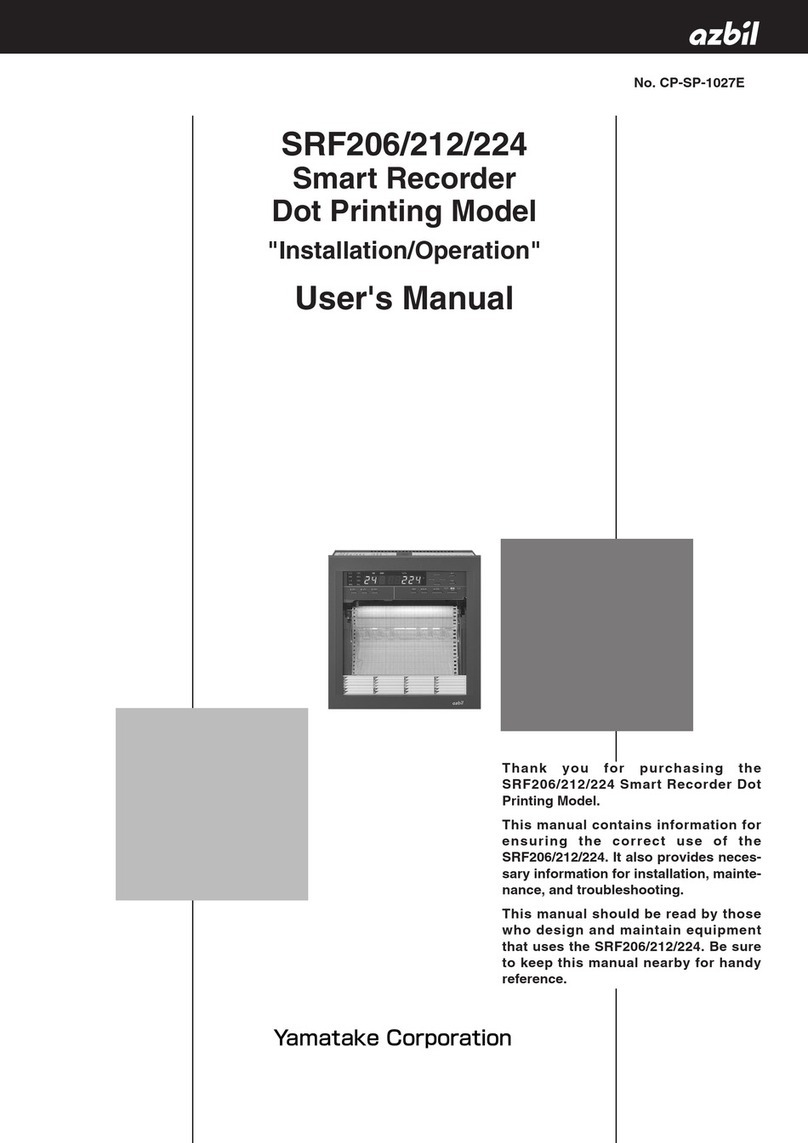
vii
Detailed Table of Contents
Chapter 1 - Configuration and Structure of the Measuring
Systems ........................................................................... 1 - 1
Outline of this chapter ....................................................... 1 - 1
1.1 System Configuration ....................................................... 1 - 2
Measuring System ............................................................ 1 - 2
Analog Output and Digital Output ..................................... 1 - 4
System Configuration for Analog Output
(4 - 20 mA DC output)....................................................... 1 - 5
System Configuration for Digital Output (DE Output) ....... 1 - 8
1.2 Structure of this Unit and Functions of Parts .................... 1 - 9
Structure of the Device ..................................................... 1 - 9
1.3 Approval of this Device ..................................................... 1 - 11
Chapter 2 - Installing the Device ....................................................... 2 - 1
Outline of this chapter ....................................................... 2 - 1
2.1 Before Installation ............................................................. 2 - 2
Selecting the Installation Site (1) ...................................... 2 - 2
2.2 Installation Method ........................................................... 2 - 3
Installing the Converter ..................................................... 2 - 3
Electrical Wiring (1)........................................................... 2 - 5
Electrical Wiring (2)........................................................... 2 - 8
Electrical Wiring (3)........................................................... 2 - 11
Electrical Wiring (4)........................................................... 2 - 12
Electrical Wiring (5)........................................................... 2 - 13
Electrical Wiring (6)........................................................... 2 - 14
Electrical Wiring (7)........................................................... 2 - 15
Chapter 3 - Operating and Stopping of the Measuring System ..... 3 - 1
Outline of this chapter ....................................................... 3 - 1
3.1 Start-up ............................................................................. 3 - 2
3.2 Preparations before Measurement ................................... 3 - 3
Zero Adjustment (1) .......................................................... 3 - 3
Method Using the Data Setting Device ............................. 3 - 4
Method Using the S-SFC .................................................. 3 - 6
3.3 Stopping ........................................................................... 3 - 7
3.4 Setting the Communication Function ................................ 3 - 8
3.5 Setting Write Protection .................................................... 3 - 10
3.6 Setting the Empty Detection Function .............................. 3 - 11
Chapter 4 - Operation Using the Data Setting Device ..................... 4 - 1
Outline of this chapter ....................................................... 4 - 1
4.1 Functions of the Data Setting Device ............................... 4 - 2
Data Setting Device .......................................................... 4 - 2
Operating the Display/Data Setting Device ...................... 4 - 5
Screen Organization ......................................................... 4 - 7
How to Skillfully Operate the Touch Key Switches ........... 4 - 10
How to Enter the Operator's Mode ................................... 4 - 11
Operating in Operator’s Mode .......................................... 4 - 12
Resetting the Damping Time Constant ............................. 4 - 13
Zero Adjustment ............................................................... 4 - 14




























